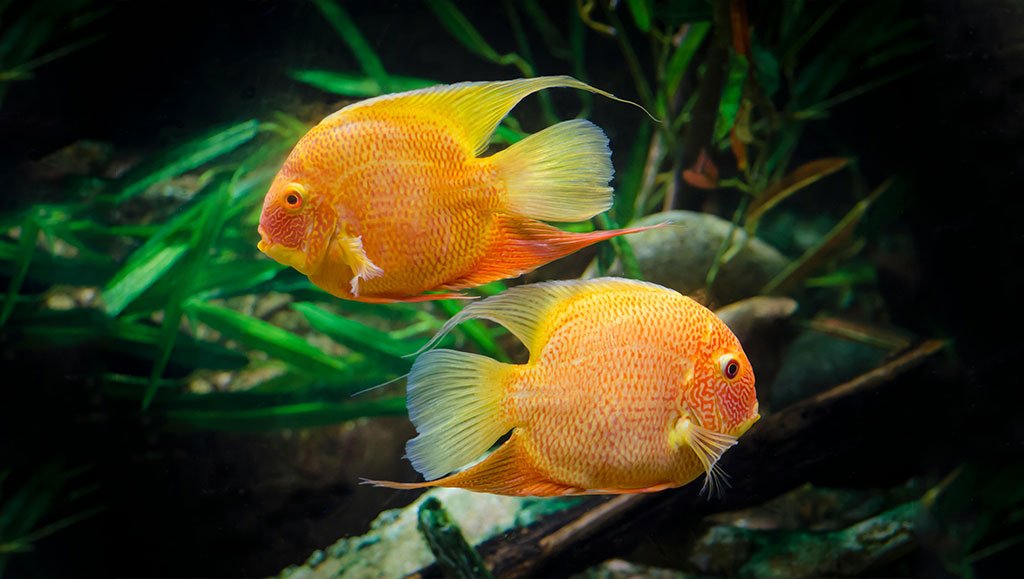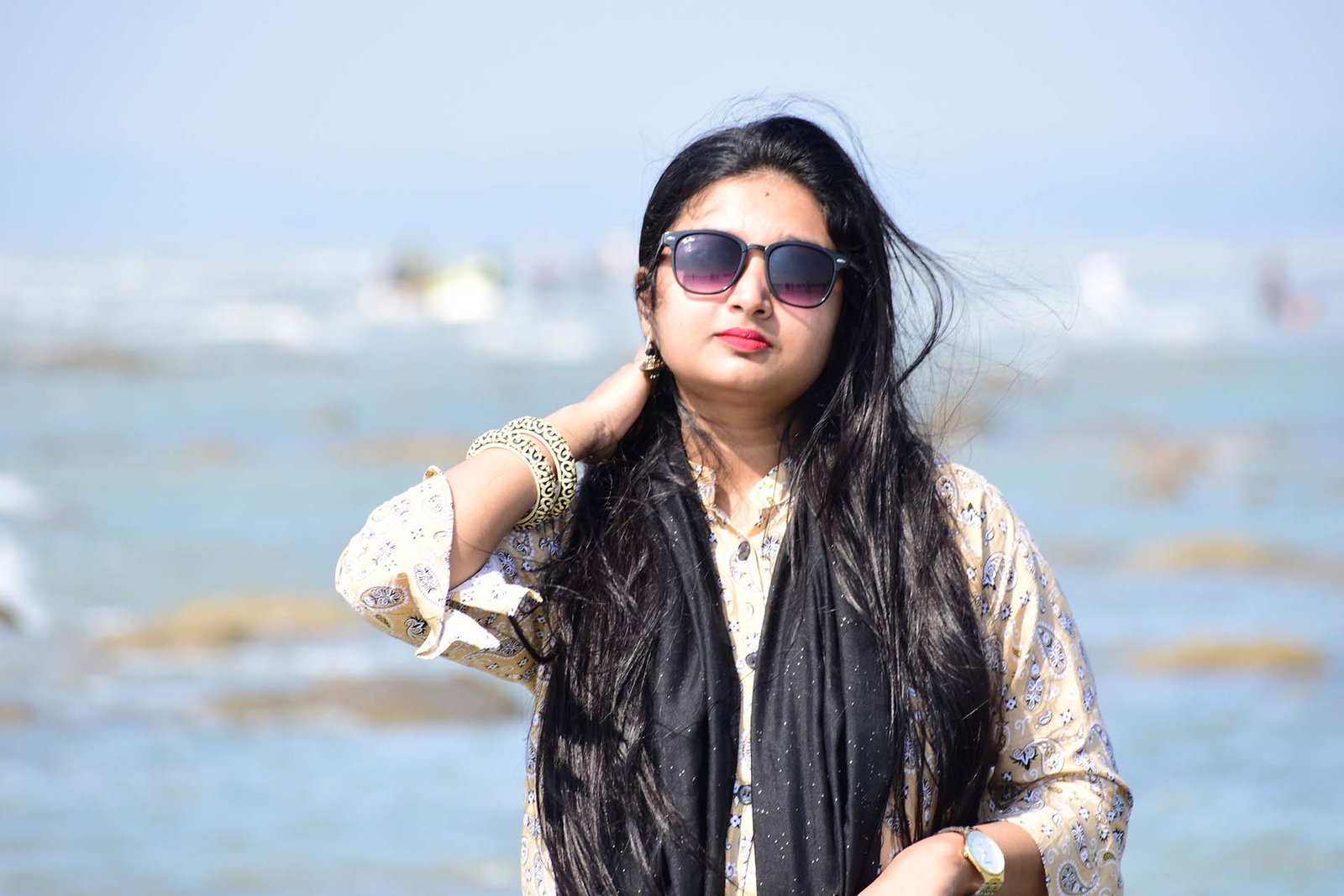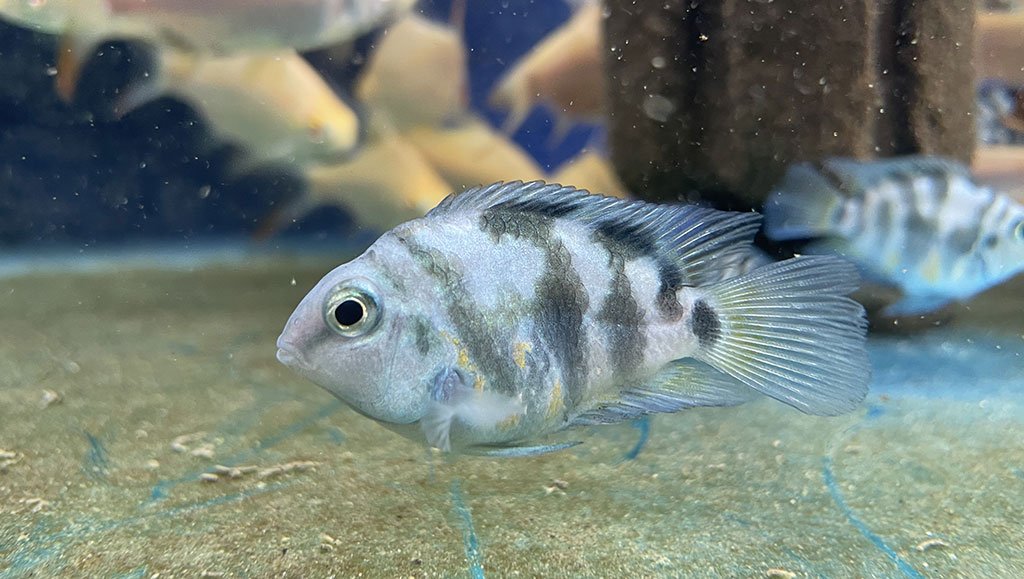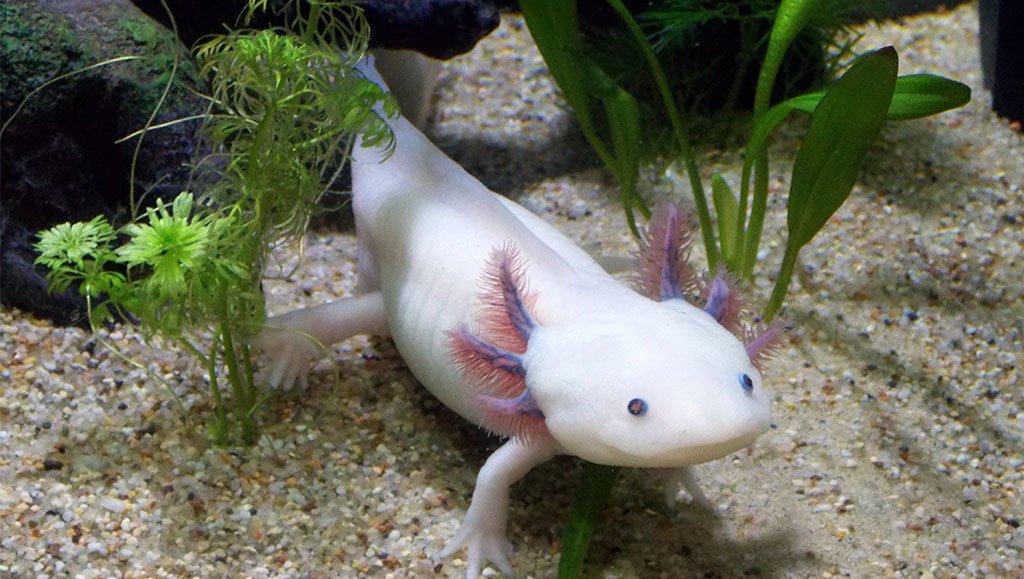Aquarium lovers frequently choose Severum cichlids, also called Heros severus, because of their eye-catching colors, intriguing habits, and comparatively low maintenance needs. Native to the Amazon Basin in South America, these cichlids have become sought-after additions to many home aquariums around the world.
In this comprehensive guide, I will take you on a journey through the fascinating world of Severum cichlids, exploring their different varieties, tank requirements, feeding habits, breeding techniques, and more.
Overview of Severum Cichlid
Severum cichlids come in a wide range of stunning color variations, each with its own unique beauty. Some of the most popular varieties include:
Green Severum Cichlid
The Green Severum Cichlid, scientifically known as Heros severus, is one of the most commonly found variants of Severum cichlids in the aquarium trade. It is named after its stunning green coloration, which can vary from light green to a darker shade. These fish get along well with other peaceful species of fish and make good housemates.
It’s crucial to give your Green Severum Cichlid a roomy tank with a minimum capacity of 55 gallons in order to protect their health and wellbeing. Their ideal tank should be well-filtered, have a pH of 6.5–7.5, and be between 76 and 82°F in temperature. They will flourish if you feed them a well-balanced diet of premium pellets, flakes, and frozen or live foods.
Turquoise Severum Cichlid
The Turquoise Severum Cichlid, also known as the Electric Blue Severum, is a stunning variant with a vibrant turquoise coloration. Because of their remarkable look, aquarium hobbyists highly prize these fish. The Turquoise Severum Cichlid has similar care requirements to the Green Severum Cichlid.
For their health, you need a 55-gallon tank or more, with adequate filtration and a temperature range of 76–82°F. Being omnivores, they will consume a wide range of foods, such as premium flakes, live or frozen foods, and pellets. It’s essential to regularly change the water and check the water’s parameters to keep your Turquoise Severum Cichlid happy.
Red Severum Cichlid
The Red Severum Cichlid, also known as the Rotkeil Severum, is a beautiful variant that displays vibrant red coloration. They are highly sought after by aquarists for their stunning appearance and peaceful temperament. To care for your Red Severum Cichlid, provide them with a spacious tank of at least 55 gallons, as they can grow to be around 8 inches in length.
The ideal range for the water’s temperature and pH is 76–82°F and 6.5–7.5, respectively. These fish will eat a variety of foods because they are omnivores, including flakes, pellets, frozen food, and live food. Adding hiding spots, such as caves or driftwood, to the tank will help create a comfortable environment for your Red Severum Cichlid.
Gold Severum Cichlid
The Gold Severum Cichlid, also known as the Rotkeil Gold Severum, is a stunning variant with a bright gold coloration. These fish are highly sought after for their vibrant appearance and peaceful nature. To care for your Gold Severum Cichlid, provide them with a tank of at least 55 gallons, as they can grow up to 8 inches in length.
Maintain the water temperature between 76-82°F and the pH level between 6.5-7.5. Being omnivorous, the Gold Severum Cichlid will prosper on a variety diet consisting of premium flakes, pellets, and frozen or live foods. Adding plants and decorations to the tank will not only enhance the aesthetic appeal but also provide hiding spots for your Gold Severum Cichlid.
Yellow Severum Cichlid
The Yellow Severum Cichlid, also known as the Golden Severum, is a stunning variant with a bright yellow coloration. These fish are highly sought after for their vibrant appearance and peaceful temperament. To care for your Yellow Severum Cichlid, provide them with a tank of at least 55 gallons, as they can grow up to 8 inches in length.
Maintain the water temperature between 76-82°F and the pH level between 6.5-7.5. Due to its omnivorous nature, the Yellow Severum Cichlid will thrive on a diet that includes premium pellets, flakes, and frozen or live foods. For the health and wellbeing of your Yellow Severum Cichlid, routine water changes and parameter monitoring are essential.
Blue Severum Cichlid
The Blue Severum Cichlid, also known as the Electric Blue Severum, is a stunning variant with a vibrant blue coloration. These fish are highly sought after for their striking appearance and peaceful nature. To care for your Blue Severum Cichlid, provide them with a tank of at least 55 gallons, as they can grow up to 8 inches in length.
Maintain the water temperature between 76-82°F and the pH level between 6.5-7.5. Being an omnivorous fish, the Blue Severum Cichlid will take a wide range of diets, including premium flakes, pellets, and frozen or live foods. Decorate the tank with rocks, plants, and driftwood to create a natural habitat for your Blue Severum Cichlid.
Golden Severum Cichlid
The Golden Severum Cichlid, also known as the Sunburst Severum, is a stunning variant with a vibrant golden coloration. These fish are highly sought after for their striking appearance and peaceful nature. To care for your Golden Severum Cichlid, provide them with a tank of at least 55 gallons, as they can grow up to 8 inches in length.
Maintain the water temperature between 76-82°F and the pH level between 6.5-7.5. Being an omnivorous fish, the Golden Severum Cichlid will flourish on a diet of premium pellets, flakes, and frozen or live meals. For the health and wellbeing of your Golden Severum Cichlid, routine water changes and parameter monitoring are essential.
Rainbow Severum Cichlid
The Rainbow Severum Cichlid, also known as the Super Red Severum, is a stunning variant with a vibrant rainbow coloration. These fish are highly sought after for their striking appearance and peaceful nature. To care for your Rainbow Severum Cichlid, provide them with a tank of at least 55 gallons, as they can grow up to 8 inches in length.
Maintain the water temperature between 76-82°F and the pH level between 6.5-7.5. Being an omnivorous fish, the Blue Severum Cichlid will take a wide range of diets, including premium flakes, pellets, and frozen or live foods. Adding rocks and driftwood to the tank will provide hiding spots and create a natural-looking environment for your Rainbow Severum Cichlid.
Black Severum Cichlid
The Black Severum Cichlid, also known as the Blackwater Severum, is a stunning variant with a deep black coloration. These fish are very sought after because of their unusual look and calm disposition. To care for your Black Severum Cichlid, provide them with a tank of at least 55 gallons, as they can grow up to 8 inches in length.
Maintain the water temperature between 76-82°F and the pH level between 6.5-7.5. Being an omnivorous fish, the Black Severum Cichlid will flourish on a diet that includes premium pellets, flakes, and frozen or live meals. A well-decorated tank with plants, rocks, and driftwood will create a comfortable environment for your Black Severum Cichlid.
Red Spot Gold Severum Cichlid
The Red Spot Gold Severum Cichlid, also known as the Rotkeil Red Spot Severum, is a stunning variant with a bright gold coloration and red spots. These fish are highly sought after for their vibrant appearance and peaceful nature. To care for your Red Spot Gold Severum Cichlid, provide them with a tank of at least 55 gallons, as they can grow up to 8 inches in length.
Maintain the water temperature between 76-82°F and the pH level between 6.5-7.5. Being an omnivore fish, the Red Spot Gold Severum Cichlid will eat a wide range of meals, such as premium pellets, flakes, and live or frozen foods. Your Red Spot Gold Severum Cichlid’s health and wellbeing depend on regular water changes and parameter monitoring.
Orange Severum Cichlid
The Orange Severum Cichlid, also known as the Super Red Gold Severum, is a stunning variant with a vibrant orange coloration. These fish are highly sought after for their striking appearance and peaceful nature. To care for your Orange Severum Cichlid, provide them with a tank of at least 55 gallons, as they can grow up to 8 inches in length.
Maintain the water temperature between 76-82°F and the pH level between 6.5-7.5. Being an omnivorous fish, the Orange Severum Cichlid will flourish on a diet of premium pellets, flakes, and frozen or live meals. Adding rocks, caves, and driftwood to the tank will provide hiding spots and create a natural habitat for your Orange Severum Cichlid.
Understanding Severum Cichlid Size and Colors
Having a typical length ranging from between eight and ten inches, adult Severum cichlids are well-known for their enormous size. However, a number of variables, including nutrition, tank capacity, and water quality, might affect their growth. It’s important to provide them with a spacious tank to allow for their growth and to prevent any territorial disputes within the aquarium.
The coloration of Severum cichlids can vary depending on their mood, health, and breeding status. Green Severum cichlids, for example, exhibit a vibrant green color with subtle patterns, while the Turquoise Severum cichlids display a stunning blue-green hue.
The Red Severum cichlids, as their name suggests, feature a rich red color that can intensify during breeding. Gold Severum cichlids, on the other hand, showcase a beautiful golden-yellow body with shimmering scales. These are just a few examples of the mesmerizing colors that Severum cichlids can exhibit.
Setting up the Perfect Severum Cichlid Tank
To ensure the well-being of your Severum cichlids, it’s crucial to set up the perfect tank that meets their specific requirements. First and foremost, consider the tank size. Owing to its size, two Severum cichlids should have a minimum tank capacity of 55 gallons. Providing ample swimming space will not only promote their physical health but also reduce the likelihood of aggression.
Use plants, driftwood, and pebbles to create a variety of hiding places inside the tank that reflect the creatures’ natural surroundings. This will give them a sense of security and help reduce stress. Keep the pH of the water between 6.0 and 7.5 and the temperature between 75 and 82°F (24 and 28°C). Maintaining a clean and stable tank environment requires routine water changes and filtration.
Ideal Tank Mates for Severum Cichlids
While Severum cichlids can be territorial and aggressive, they can coexist with other fish species that share similar temperament and size requirements. Some suitable tank mates for Severum cichlids include other South American cichlids like Angelfish and Discus, peaceful tetras like Neon Tetras and Rummy Nose Tetras, and bottom-dwelling species such as Corydoras and Plecos.
Avoid keeping them with fin-nipping species or aggressive fish that may provoke conflicts.
Introduce tank mates gradually and monitor their behavior closely. If aggression becomes an issue, provide plenty of hiding spots and rearrange the tank decor to create territorial boundaries. Maintaining a peaceful community is crucial for the welfare of every animal living in your aquarium.
Feeding and Nutrition for Severum Cichlids
Since severem cichlids are omnivores, they need a diet that is balanced and includes both plant-based and high-protein meals. They eat a wide range of insects, tiny crustaceans, and plant materials in the wild. You can provide them with a variety of premium pellets, flakes, frozen, or live foods while they are in captivity.
Add a range of foods to their diet, including bloodworms, brine shrimp, daphnia, and flakes or pellets made of spirulina. Supplement their diet with fresh vegetables like blanched spinach, peas, and zucchini. Feed them twice a day, offering an amount of food they can consume within a few minutes to prevent overfeeding and water quality issues.
Breeding Severum Cichlids – Tips and Techniques
For devoted aquarium hobbyists, breeding Severum cichlids can be a fulfilling experience. To encourage breeding behavior, create the optimal conditions in the tank. Increase the water temperature slightly to around 78-82°F (26-28°C) and provide suitable spawning sites such as flat rocks or large plant leaves. Severum cichlids are known to be substrate spawners, so a sandy bottom in the breeding tank is preferable.
During the courtship and spawning process, the female Severum cichlid will lay eggs and the male will fertilize them. After spawning, the parents will guard and fan the eggs to ensure proper oxygenation.
The parents will care for the fry until they are able to stand on their own when the eggs hatch. It’s important to provide ample hiding spots for the fry to seek shelter and ensure they receive proper nutrition by feeding them with crushed flakes or baby brine shrimp.
Common Health Issues in Severum Cichlids and How to Prevent Them
Even while serrum cichlids are typically resilient fish, improper tank maintenance might nevertheless leave them vulnerable to some health problems. Inadequate nutrition, elevated ammonia or nitrate levels, and poor water quality can all cause stress and weakened immune systems. This may increase their susceptibility to illnesses like fin rot, ich, and bacterial infections.
To prevent health issues, maintain excellent water quality through regular water changes and proper filtration. Monitor the water parameters regularly and make adjustments as needed. Provide a varied and balanced diet to support their overall health and immune system. Before adding additional fish to the main tank, quarantine them to stop the spread of disease.
If you notice any signs of illness, such as loss of appetite, abnormal behavior, or visible symptoms, consult with a knowledgeable aquarist or a veterinarian who specializes in fish health.
Lifespan of Severum Cichlid
The lifespan of a Severum Cichlid can vary depending on several factors, including its environment, diet, and overall care. On average, a well-cared-for Severum Cichlid can live up to 10 years or more in captivity. However, it is not uncommon for some individuals to live for only 5-7 years, while others can reach the impressive age of 15 years or even longer.
Environmental Factors
The environment in which a Severum Cichlid is kept plays a crucial role in its lifespan. These fish thrive in a spacious tank with plenty of hiding spots and vegetation. It is important to provide them with a tank size of at least 55 gallons or more, as they can grow up to 8-10 inches in length.
Additionally, maintaining a stable water temperature between 76-82°F and a pH level of 6.0-7.5 is crucial for their overall health and longevity.
Nutrition and Diet
For a Severum Cichlid to be healthy, diet and nutrition are crucial. These fish consume both small invertebrates and plant stuff, making them omnivores. High-quality fish pellets, flakes, and frozen or live meals like brine shrimp or bloodworms should be offered as part of a balanced diet.
Overfeeding must be avoided since it might result in obesity and other health problems. You may contribute to your Severum Cichlid’s longer lifespan by feeding it a varied and healthy diet.
Overall Care
The longevity of your Severum Cichlid depends on you giving it the right care. A healthy atmosphere must be maintained by routine water changes, filter upkeep, and parameter monitoring.
Additionally, it’s critical to watch for any indications of disease or illness, as early intervention can significantly improve survival rates. Furthermore, giving Severum Cichlids matching tank mates might lessen stress and encourage a longer lifetime.
Behaviors of Severum Cichlid
Social Behavior
Severum cichlids are generally peaceful and can be kept in community tanks. However, they can become territorial during breeding or if they feel threatened. To deter violence, the tank should have plenty of hiding places and territory.
Tank mates should be carefully chosen, considering their compatibility with severum cichlids. Good tankmates for severum cichlids include peaceful species such as tetras, catfish, and other cichlids of similar size.
Breeding Behavior
It’s well known that severum cichlids have unique breeding habits. The male will create a pit in the substrate and lure the female to lay eggs when it’s time to spawn. After the female lays her eggs in the pit, the male fertilizes them.
The responsibility of protecting and tending to the eggs is shared by both parents. For the fry to flourish, it’s critical to create a good breeding habitat with the right kind of plants and hiding places.
Feeding Behavior
Severum cichlids have a voracious appetite and are omnivores. Their main sources of food in the wild include insects, tiny crustaceans, and plant debris.
They take well to a wide range of diets in captivity, including premium pellets, flakes, frozen or live feeds like bloodworms and brine shrimp, as well as fresh vegetables. A balanced diet is necessary to maintain their general health and brilliant hues.
Coloration and Display Behavior
One of the most captivating aspects of severum cichlids is their vibrant coloration. Depending on the variant, severum cichlids can display shades of green, turquoise, red, gold, yellow, blue, or even a rainbow of colors.
Depending on their attitude and surroundings, their colors might fluctuate in intensity. During courtship or when displaying aggression, severum cichlids may intensify their colors and exhibit a beautiful display to attract a mate or ward off rivals.
Territorial Behavior
Severum cichlids can become territorial, especially during breeding or if they feel threatened. It is important to provide them with ample space and hiding spots within the tank to create territories and minimize aggression.
Each fish should have its own territory to prevent constant conflicts. Providing rocks, caves, and driftwood can help create suitable hiding spots and territories for severum cichlids.
Family connection with others:
Delving into the fascinating world of Severum Cichlids unveils an unexpected familial bond with Polar Blue Parrot Cichlids. Despite their distinct appearances and behaviors, both species share a common ancestry within the expansive Cichlid family. This connection adds depth to our understanding of these captivating freshwater fish, highlighting the intricate web of relationships that defines the Cichlid community. As we unravel the ties between Severum and Polar Blue Parrot Cichlids, we gain valuable insights into the evolutionary history and diversity of this remarkable family of aquatic creatures.
How big do severum cichlids get?
Severum cichlids grow at a moderate rate in terms of size. They can reach an average length of 8 to 10 inches (20 to 25 cm) while kept in captivity. Nonetheless, there are some differences between the several varieties of severeum cichlids.
The green severum cichlid, for example, has a tendency to grow a little bigger, up to 12 inches (30 cm). The range for the golden and turquoise severum cichlids is often between 8 and 10 inches.
What fish can I keep with severum?
Selecting compatible tank mates for your Severum cichlid is essential to creating a peaceful and stress-free atmosphere. Severum cichlids are usually calm fish species that get along nicely, despite their tendency toward territorial behavior. Gurumas, angelfish, swordtails, tetras, and gouramis are a few common tank companions.
Severum cichlids should not be kept with fish that are hostile or nibble at their fins as this could result in fights and injury. In addition, constructing territories and offering plenty of hiding places within the aquarium might aid in lowering hostility and fostering peaceful cohabitation.
Is severum a peaceful fish?
One of the most appealing characteristics of severum cichlids is their peaceful temperament. Unlike some other cichlid species, severums are known for their calm and gentle nature. They rarely show aggression towards other fish, making them suitable for community tanks.
However, it is important to note that severum cichlids can become territorial during breeding periods or when they feel threatened. In such cases, they may exhibit some aggressive behaviors towards tank mates. Proper tank setup, appropriate tank mates, and providing adequate space can help minimize any potential aggression.
What do severums eat?
Severum cichlids are omnivores, meaning that they consume a broad range of meals, including both plant-based and high-protein items. When they are in the wild, they eat water plants, tiny crustaceans, and insects. Animals held in captivity require a balanced diet to preserve their general health and well-being.
An excellent foundational diet is high-quality flakes or pellets designed specifically for cichlids. To enhance their hues and variety, you can supplement their diet with live or frozen items such as brine shrimp, bloodworms, and daphnia. Additionally, serving them fresh vegetables like blanched peas and spinach is excellent for their digestive systems.
Conclusion
Severum cichlids are incredibly fascinating fish that can give any aquarium a splash of color and character. They have gained popularity among aquarists due to their unique behaviors, remarkable size, and variety of kinds.
With a balanced diet, proper tank conditions, knowledge of their unique needs, and providing the care they require, you can create a thriving home for these beautiful fish. Discovering the fascinating world of Severum cichlids may be a fulfilling experience for anybody, regardless of expertise level. Now get started and let’s go on an amazing adventure into the world of Severum cichlids!




